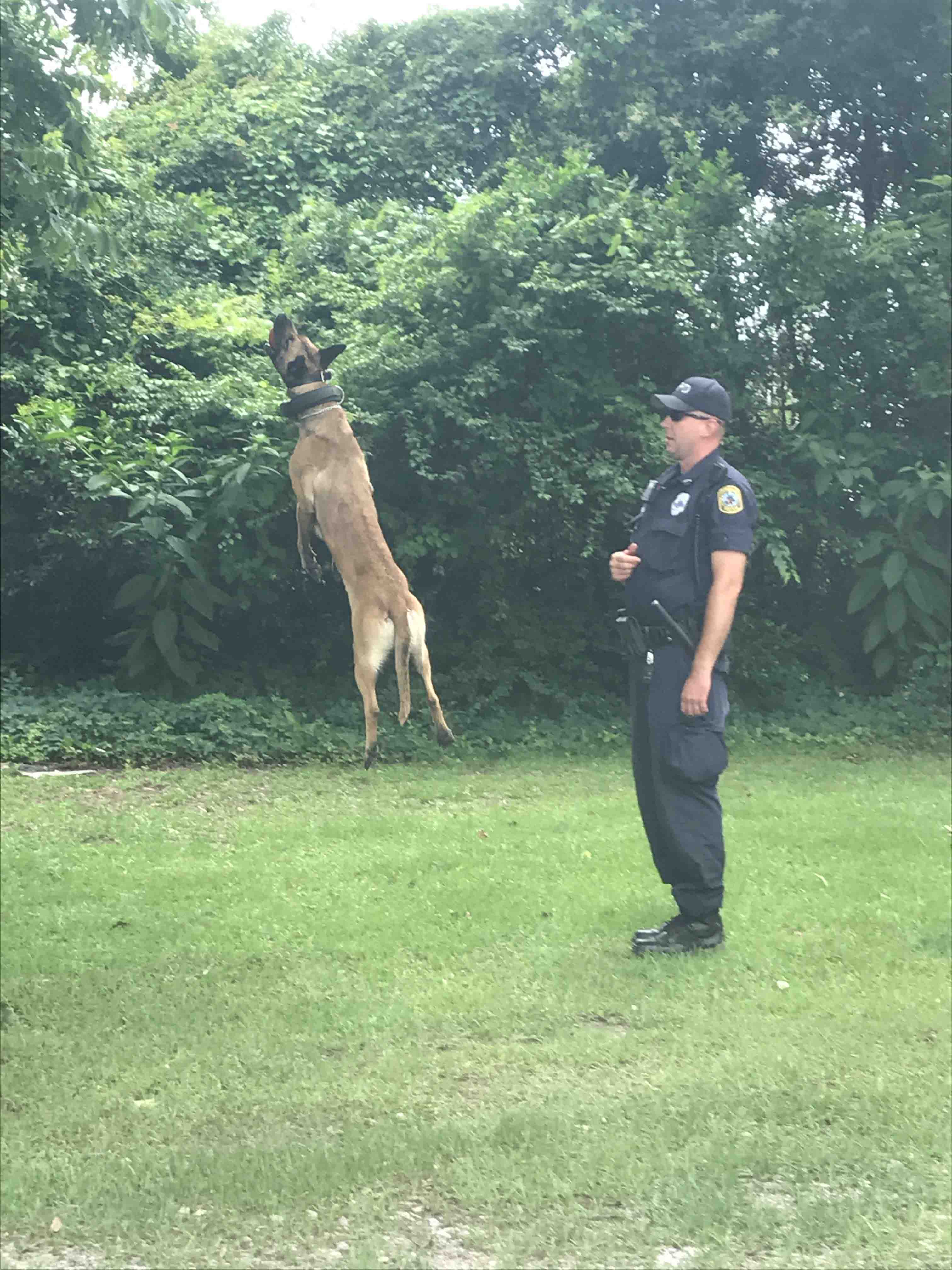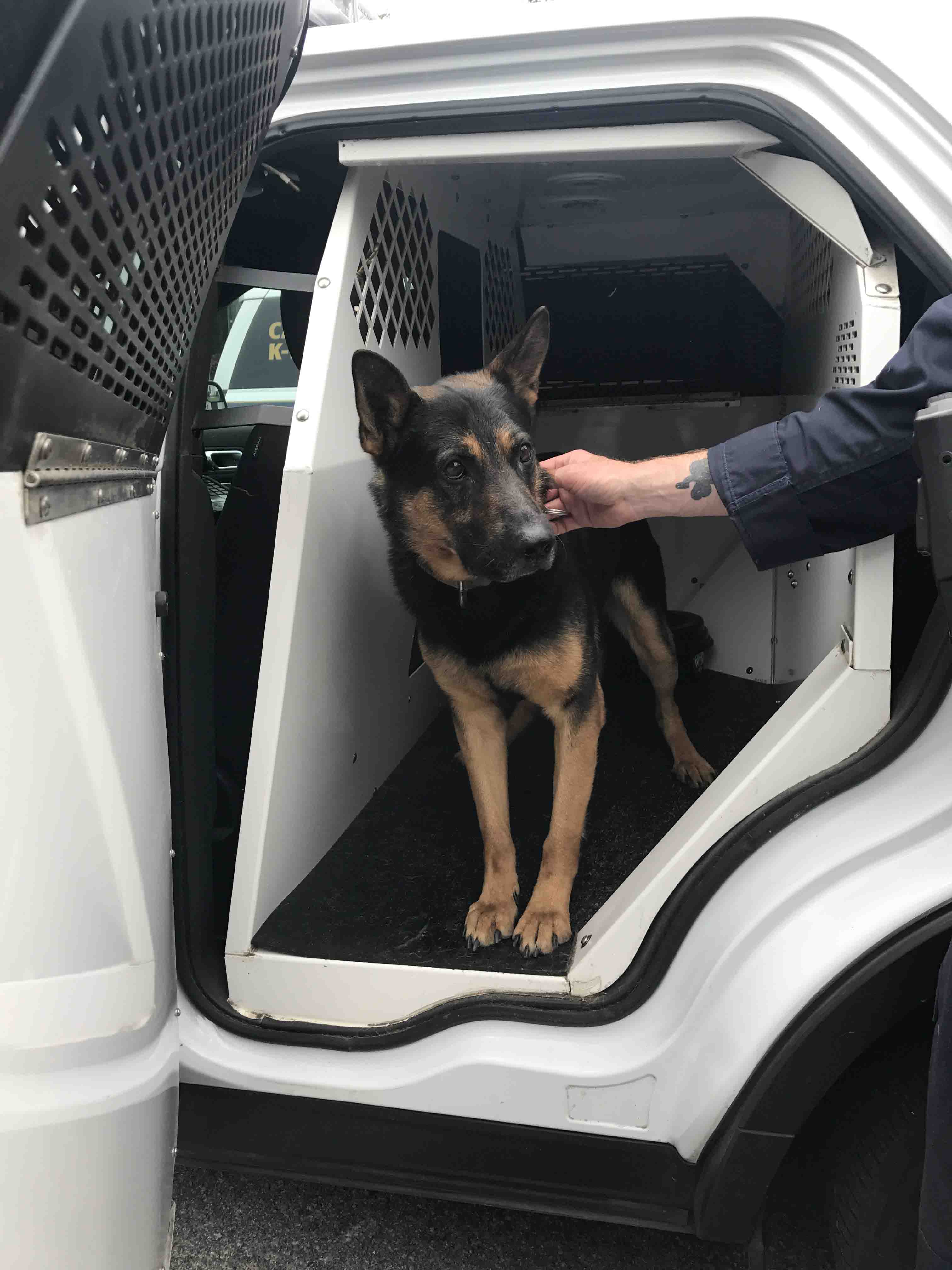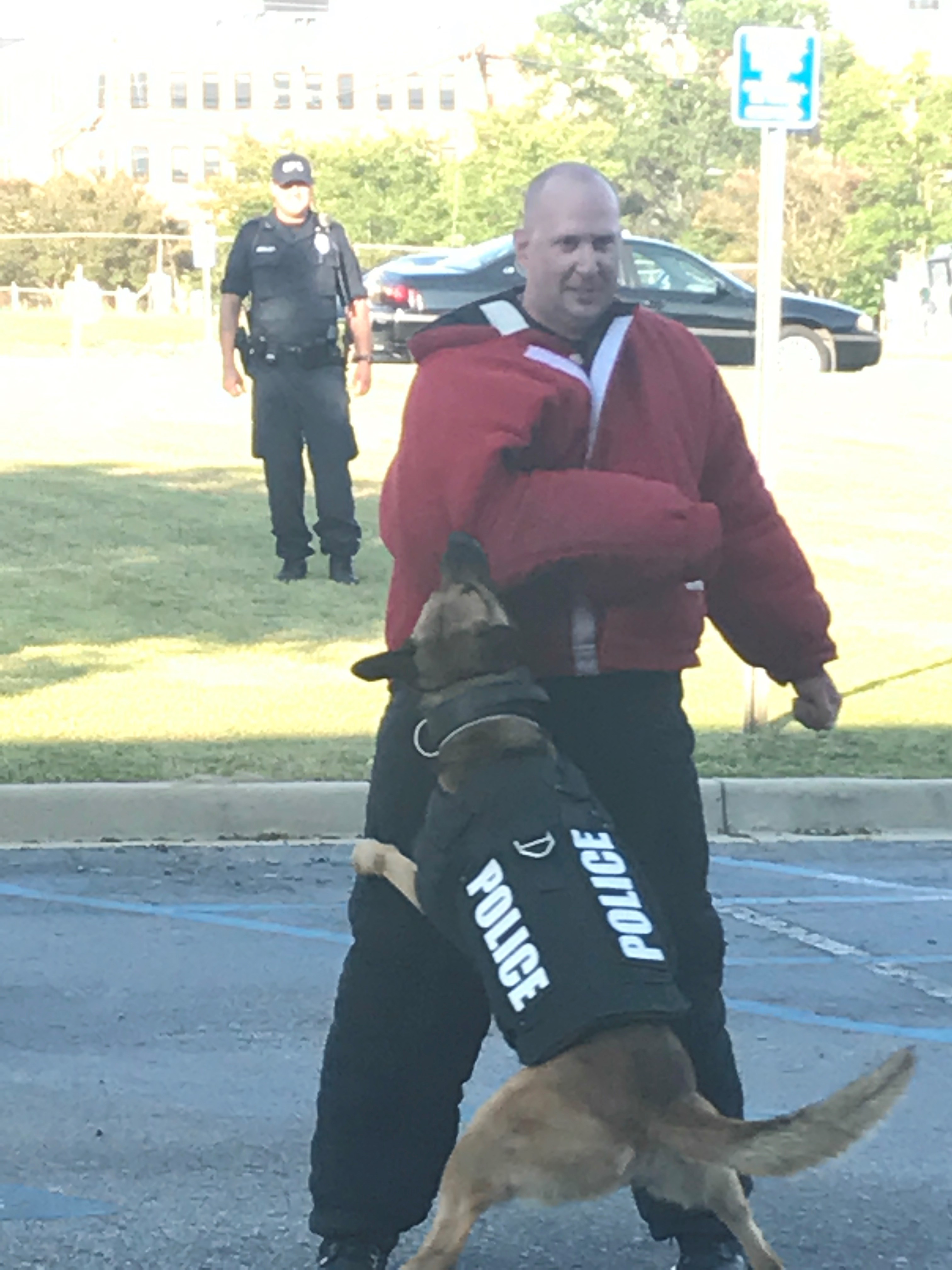Police K-9 officers perform a variety of duties to protect communities and law enforcement officers — from tracking people and deterring crime to detecting explosives, narcotics and cadavers. However, the use of canines must not infringe on the public's civil rights, one of the many issues police departments must be aware of when addressing the risks and liabilities that accompany the use of police dogs.

A Columbia police officer trains a K-9, which can then detect drugs, apprehend suspects, track missing persons, and search buildings and articles.
Insurance coverage
A department with a K-9 officer should coordinate health and medical care with a local veterinarian, which typically offers health insurance plans for pets, said Todd Williams, public safety loss control consultant for the Municipal Association's Risk Management Services.
The SC Municipal Insurance and Risk Financing Fund offers general liability coverage for K-9s and insures against death by accident, illness or disease but not a natural causes death for any canine older than 8.
Over the course of two years, Williams said RMS has received less than 10 medical claims after an officer was bitten by a police dog during training.
There are some instances when a K-9 bites a suspect, and the suspect sues the police department.
"These cases are very rarely successful for the person suing," said Williams. "They're under arrest and they know that there is some level of force. It's similar if you tase a suspect or pepper spray someone, it's a use of force. We have to make sure the level of force is appropriate."
Equipment
A law enforcement best practice is for a K-9 handler to have in-vehicle technology that protects the K-9 from accidental heat death, said Williams. There is no state law, however, that requires police cars to be outfitted with the technology. Some department vehicles are equipped to automatically roll down the windows and turn on the fans when an automobile gets too hot.

City of Columbia K-9 officer
Additionally, some departments have a system in which an excessively hot vehicle that is used for K-9 transport sets off an alarm and sends the handler and handler's supervisor a text message about the unsafe vehicle conditions.
Another factor to consider is limitations the K-9 and equipment place on the use of the vehicle.
"If you put a K-9 in a patrol car, that limits that police officer from being able to transport a suspect," said Williams. "You don't have room."
At-home care
If a police department does not kennel the dog at the police station or some other fixed work site, the agency must pay handlers for their time caring for the dog at home, which is typically the arrangement.
Time spent by a police officer to care for a police dog, whether performed at work or at home, is considered compensable time under the Fair Labor Standards Act. Understanding the true cost of purchasing, training and caring for a police dog is a factor that agencies should carefully evaluate when considering or already using police dogs.
The department must evaluate each situation to determine if a handler is being paid properly for time spent feeding, exercising, training, grooming, cleaning up after the dog, administering drugs or medicine for illness and/or transporting the dog to and from an animal hospital or veterinarian. All these activities are considered work time even on days off duty or during vacation periods. A handler need not be compensated while on vacation if the dog is being cared for by a colleague or third-party kennel, said Williams.
A police K-9 handler's Fair Labor Standards Act pay is calculated based on all the time spent performing the K-9 activities that are reasonably related to maintain the police dog for the job. This may vary from handler to handler, dog to dog and job to job. Agencies should always consult a labor attorney determining a handler's compensation for K-9 care.
"Historically, many stipends are not appropriate, because they do not take into account when the officer should be compensated at on overtime rate or time and half," said Williams.
"You always want to risk overpaying instead of underpaying," he said. "If you get a lawsuit, you want to be on the right side of it." Some departments compensate handlers by letting them leave their shift early, for instance, by waiving the last hour of a 12-hour shift.
All time spent on the dog's care or training is work time and must be recorded, said Linda Edwards, an attorney with extensive human resources experience.
"Generally, all training and veterinarian care is done during the officer's regularly scheduled shift. If not, the additional hours must be recorded. Most clients reach an agreement with the officer as to how much time it takes to feed the dog," she said, adding that most departments give ¼ hour per day for feeding the dog.

A K-9 in the Columbia Police Department demonstrates how to apprehend a suspect during the Columbia Citizens Police Academy.
"The rate paid is the officer's regular rate," said Edwards. "To the extent the training/care time pushes the total work hours into overtime, the employee is paid at his overtime rate."
In Levering v. District of Columbia, 30 minutes per day, seven days per week was deemed an appropriate minimum amount of time for compensation. Under that formula, the minimum compensable time per week would be 3 ½ hours.
"However, the time may actually be 45 minutes or an hour," said Williams. "That is why an evaluation of the individual situation is required to make sure the officers are being compensated properly. You should always consult your human resources attorney."
